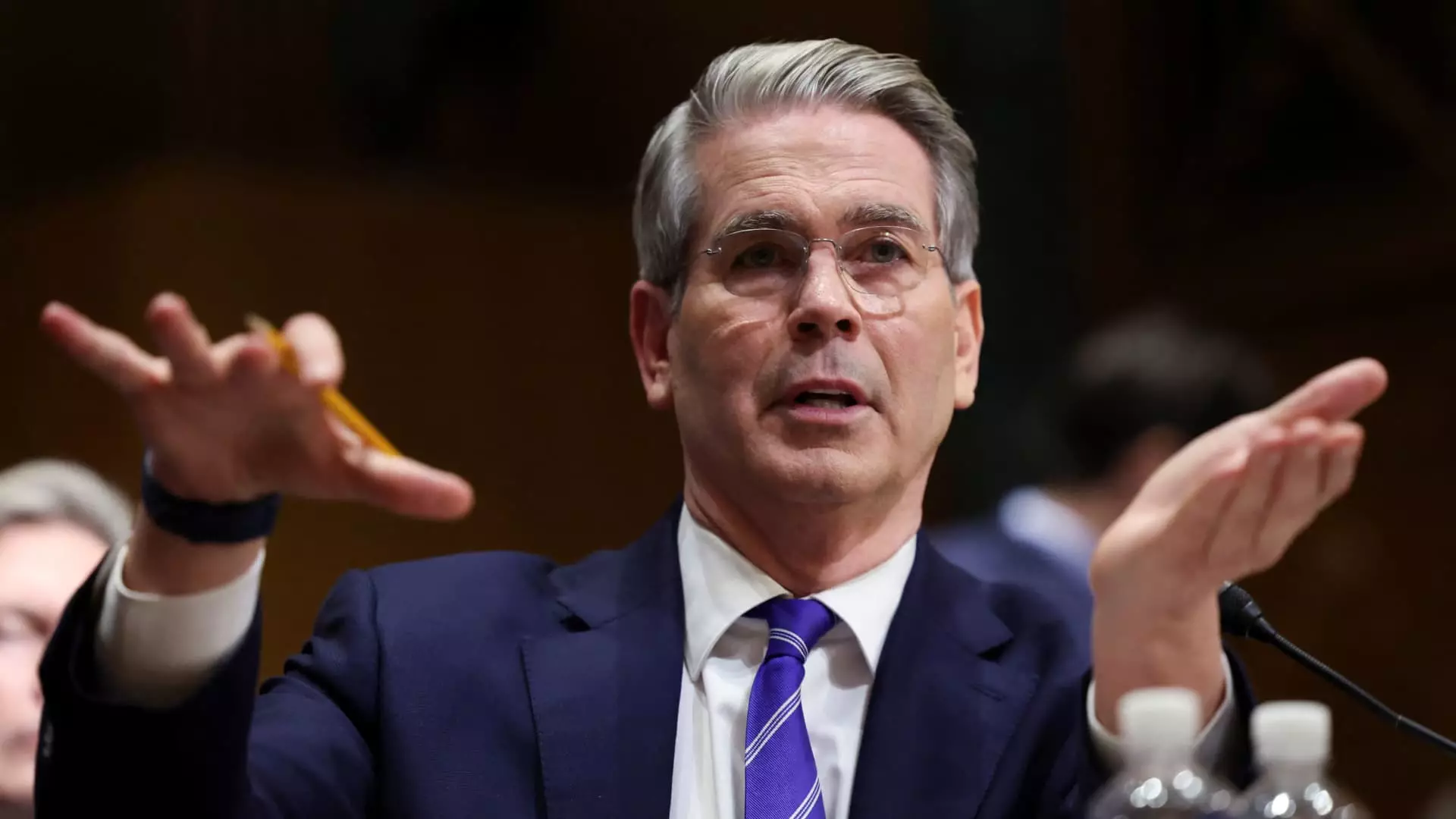In a recent spirited discussion about the ongoing trade tensions between the United States and China, Treasury Secretary Scott Bessent’s comments on CNBC’s “Squawk Box” revealed a troubling mindset: the belief that the trade war can be won with sheer bravado. Bessent claimed that the U.S. holds a significant advantage over China, dubbing the Chinese escalation in tariff threats as reckless, calling it “playing with a pair of twos.” This assertion, however, overlooks the fundamental complexity and potential consequences of escalating trade hostilities. The narrative that casts the U.S. as a winner because of its export dynamics misses the nuanced reality wherein economic interdependence plays a critical role.
Trade Imbalances and Tactical Miscalculations
Bessent’s argument hinges on the U.S. exporting only one-fifth of what China exports to America; yet, it dangerously simplifies a multifaceted relationship. While it is true that in numerical terms, America’s exposure might appear less vulnerable, this analysis doesn’t consider the long-term implications of destabilizing trade relations. The trickle-down effects of tariffs spread swiftly, impacting industries and consumers alike. For every dollar gained through tariffs, there is an inevitable risk of retaliatory strikes that could render U.S. companies struggling to remain competitive. It’s a game with more than two players, and the stakes for American jobs and the economy are at an all-time high.
The Dangerous Dance of Diplomacy
Bessent expressed hope for swift negotiations with other countries, particularly Japan, indicating a potential willingness to re-evaluate trade structures and barriers. However, this optimism does not take into account the broader geopolitical ramifications of such maneuvers. Countries aren’t merely passive players waiting to be reshuffled into the U.S. game plan; they have their own interests to protect. The very nature of a trade war alters relationships, breeding animosity and potential alliances that could isolate the U.S. on the global stage. What if nations like China view tariffs not merely as economic measures but as an affront to national pride? The belligerent rhetoric suggests that the outcome could be much more perilous than a simple negotiation, revealing deep-rooted economic and political fissures.
Taxation Versus Tariffs: A Shifting Paradigm
Bessent envisions a future where tariffs serve as a transitional revenue stream, faded into obscurity as American manufacturing resurfaces. This notion is fraught with optimism but lacks grounding in economic realities. The projection of tariffs as a “melting ice cube” ultimately undermines the peril of relying on temporary fiscal gains, as it risks overlooking the broader consequences of isolationist economic policies. Instead of providing a sustainable pathway to job growth, a focus only on tariffs runs the risk of creating an unstable economic environment. It positions the U.S. on a trajectory where short-term wins could yield long-term losses, potentially stifling innovation and resilience.
Retaliation: The Sword of Damocles
With China announcing a staggering 34% tariff on U.S. products and President Trump countering with threats of a 50% tariff, it becomes painfully clear that posturing is only one part of a larger, dangerous equation. The U.S. is caught in a cycle of retaliation that neither side seems prepared to exit gracefully. As both nations embark on this spiral of aggression, the narrative around job creation and economic growth becomes increasingly tenuous. Stock market fluctuations can be interpreted as a canary in the coal mine—investor confidence wanes as uncertainty breeds volatility.
The Unseen Shadows of Trade Barriers
While Bessent cites non-tariff barriers like currency manipulation and unfair tax practices as critical issues, categorizing them as secondary to tariff negotiations would be a grave error. These hidden mechanisms operate like well-concealed trapdoors in an economic labyrinth, making it difficult to track their effects and navigate through them seamlessly. Addressing these barriers should become a parallel priority, as focusing solely on visible tariffs could lead the U.S. into an untenable position in global markets. The keystone of progressive economic policy must be a holistic approach towards trade; one that recognizes the interconnectedness of economies in a globalized world, rather than reducing complex interactions to a transactional scorecard.
In this precarious economic climate, the path forward requires a delicate balance of assertiveness in negotiations and a commitment to sustainable growth rather than short-lived victories. The U.S. must navigate these turbulent waters carefully to avoid shipwrecking its own economic future.

Leave a Reply